October 5, 2019
The Ting Hun ceremony has several components and each has its own meaning. The symbolic practice originates from the olden times when the bride and the groom are matched and not real sweethearts prior to their wedding. In some instances, the respective families don’t know each other and the giving of gifts by the groom’s family is an assurance to the bride’s family that she will be taken cared of.
Times have changed and perceptions about the shared meanings have modernized. Couples can modify the rituals based on the families’ interpretations of the symbols.
1. Derrick’s mom, Wilna, brings gifts for my daughter and these are placed on top of the table covered with a red table cloth. For the Chinese, the color red symbolizes prosperity, abundance, happiness. This is why Chinese people prefer to wear red during birthdays, Christmas, New Year, baptism, and on special occasions. Filipinos like to wear red on Valentine’s Day.
2. At ten am, we, the elders, take our respective seats in the front row. The bride’s family on one side, and the groom’s family on the opposite side.
3. The backward walk
Oyen stays in the guest room on the second floor while we wait below. When the music starts, she slowly walks down the stairs backward. The backward walk symbolizes the avoidance of any negative energy surrounding her. And also to prevent the bride from seeing the groom. Surprise?
The two of us have practiced this walk several times at least three days before her Ting Hun. In the beginning, she accused me of micro-managing but after the first day she exhibited no more resistance. My goal was to make sure she would know her timing and anticipation because she could fall backward and not walk backward. She could trip and fall most especially that she would be wearing a long gown. And since there’s music, her steps and timing with the lyrics must be in synchrony.
2. The assistant
Tiffany, a first cousin of Derrick, assists her. The one assisting must be someone successful, married with kids, have a happy life, so that he/she can pass on the good luck or success, or happiness. She must be healthy, wealthy, and happy. In Tagalog, para mahawa ang anak ko sa swerte.
3. Three turns
When Oyen reaches the ground floor, she is made to turn three times, assisted by Tifanny, the lucky, healthy, wealthy, and happy lady who will also be a good role model for the bride. Tiffany is pretty too.
4. Face the groom
After turning around three times, the bride can now see the groom. In ancient times, the groom and the bride only meet on the day of their wedding. Kung pangit, that’s their risk. Pwede kayang tumakbo? Run fast.
5. Here comes the juice
Next is the serving of the juice from the eldest to the youngest member of the family to signify or show respect for the elders. The juice symbolizes happiness and good luck.
6. Corsage
This has no meaning other than palamuti.
7. The gold bangle with red threads
The mother of the groom gives the bride-to-be a gold bangle to symbolize wealth. It’s an assurance that the groom’s family is financially capable of providing for the bride.
The mother of the groom knotted the red string at least seven times around the bangle. The red-colored string symbolizes power and strength, and is believed will ward off negative energies over evil things.

When my daughter was still a baby, whenever she has sinok, I place sinulid on her forehead. Her sinok disappears but I don’t know if it’s the effect of the thread.
The bangle is small for Oyen’s wrist.

8. The giving of wristwatch to the groom by the bride’s father. For practicality reasons, both families agree on the brand or kind of watch to make sure that the bride and groom will wear them. Parents might end up buying something the couple doesn’t like so it’s good to let the couple choose the kind of watch they want. There is no rule that the watches have to be matching or have to be expensive, or must be a specific brand. Most Chinese -Filipino families nowadays prefer to buy Rolex for the Ting Hun just to play safe. The Chinese saying “all good things must come in pairs” is practiced literally and figuratively so traditionally the gifts must come in pairs and so are the watches.
Derrick also plays golf although not as avid as my husband. He shot a 3 over at a recent tournament. Magaling din like his future father-in-law. Edmund scored a one over two weeks ago winning the Low Gross. Masakit daw ang likod nya.

9. Exchange of engagement rings
The rings symbolize their loyalty, love, and commitment to each other. It represents their pledge to continue their journey together.

10. Serving of tea to the elders
The practice of tea ceremony dates back to the Tang Dynasty and is the most important aspect of the engagement. It is the very formal introduction of the bride and groom to their respective families. It’s an expression of respect to the elders, and acceptance of the newest member of the family.
This is supposedly how it goes:
Julienne—-“Lola, this is Derrick, Derrick this is Lola, you may call her Lola.”
Derrick—–“Daddy, this is Julienne, Julienne, this is daddy, you may call him daddy.”

Wilna brought a box of tea but only two packets were used. She was the one who taught Antonia how to boil and prepare the tea. She helped us with the preparations and she was the one who brought most of the props needed— teacups, bowls, fruits, Chinese dates, eggs, the Sanghee double happiness stickers, give-away bags, etc. She’s been to dozens of Ting Huns so she is an authority when it comes to Ting Hun preparations. Thank you, Wilna.
The family is our rock and the primary source of love, happiness, emotional and psychological stability, and security. It is important that the two families bond together and have common respect for each other. They will be the support system for the new couple.
11. The gold medallions
A lot of discussions ensued several weeks before the Ting Hun because we didn’t know what kind of medallion we should buy. The groom’s side was more prepared because they’re knowledgeable about Ting Hun. Edmund and I have never attended a Ting Hun ceremony before so we were in total darkness. My best friend in college and Oyen’s ninang sa binyag, Nelia Sy (now married to a Dy), was an authority. The two of us initially agreed to go to Ongpin to buy. I gave her my own price estimate based on the description Oyen had told me. There’s a suggested size and weight. Nelia said hindi naman aabot dun sa price estimate ko. Since we were going to Bangkok, I no longer asked Nelia to go to Ongpin with me.
Edmund found some photos of the medallion online and read some articles about past Ting Huns. Meron mga intriga. Meron daw kumupas, the medallion tarnished and became rust y because it was gold plated only, not real gold. Meron din daw na kanipis-nipis. I didn’t want that to happen to us so we only looked at solid gold. Yung nangingintab sa dilaw, parang baduy but that’s what Chinese gold is. Super yellow.
Philip, the father of the groom puts around Oyen’s neck the gold medallion which their family had bought.
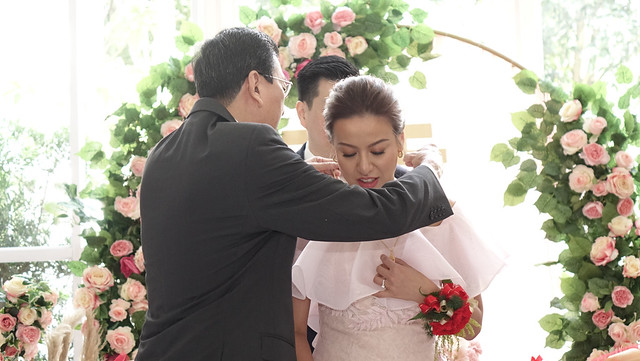
It’s my turn to put the gold medallion around the groom’s neck. I heard someone from his family said “isusuot mo yan ha? and people laughed. Nung araw, pagnaka ginto ang lalaki, ang sasabihin ng tao “parang taga-Saudi.” Kasi yung mga nagta-trabaho nuong araw sa Saudi pag-umuuwi dito sa Pilipinas, ang tataba ng chains and bracelets, gintung-ginto.
12. The cakes
The two cakes symbolize a rich and sweet married life. The cakes must be round to signify unity and harmony between the families.
After the ceremony, the groom and his brother will take the cakes, walk around the venue or in this case around the bride’s house two times to further bring luck to the relationship. He and his brother circle or drive around one block twice.

13. I placed candies and sweets in trays for the guests. This also symbolizes sweet beginnings. When we first moved into our current residence, I scattered brown sugar and candies around the fence, in the gardens. I did it several times. Until now I do that once in a while. This is like wishing for sweetness to rule inside our home. So that there is peace, and unity among us. And especially to Edmund and I’s relationship. Para kami maging sweet sa isa’t isa. Is it effective? I am not sure but what I notice is ang tataba ng langgam dito.
The sprinkling of brown sugar in our front and backyard is also my way of peace offering to spirits or beings that are residing here.
—–
Overall, the Ting Hun ceremony is meant as a formal introduction to each other’s family which is very much similar to the Filipino pamanhikan, although the Chinese way is more elaborate. The rituals are based on the beliefs and hope that the couples will have a harmonious and prosperous life.


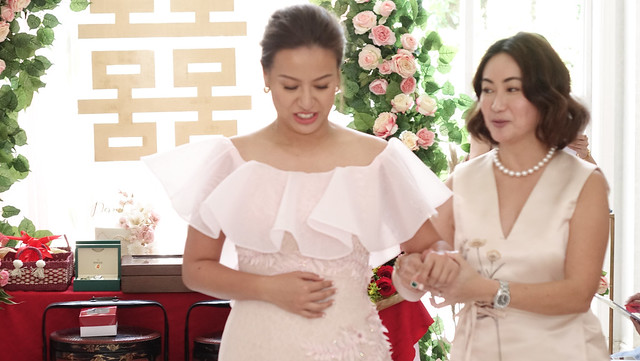
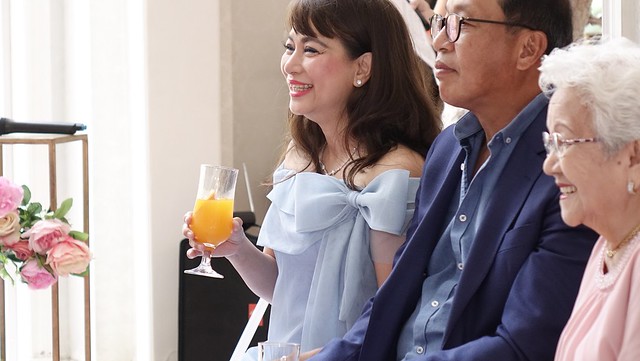

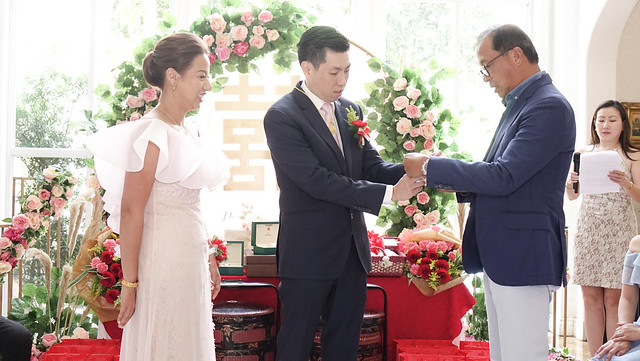



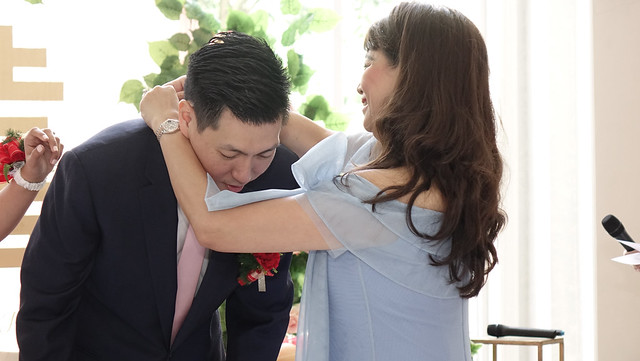


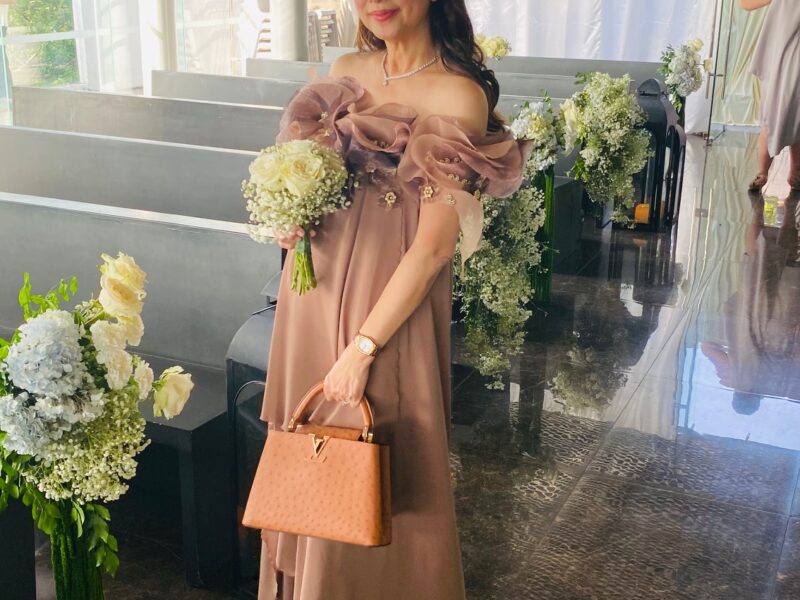
very pretty ni oyen ms annie, congratulations to both of them!!
Thank you for the compliment Olive.
Lovely couple! Congrats to both of them! 🙂
Thank you for the greetings, Pinay Geek.
Annie, because you have a good heart, your cup runneth over with God’s blessings.
Oh thank you.
Congratulations, Julienne and Derrick!
wow! ganito pala ka-elaborate ang traditional Chinese wedding. Ang ganda po talaga ni Ms. Oyen! God blesss and congratulations po!